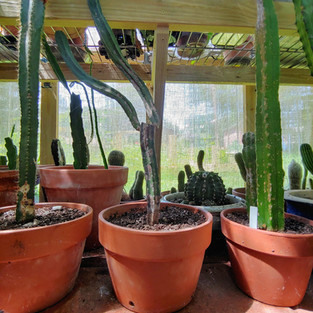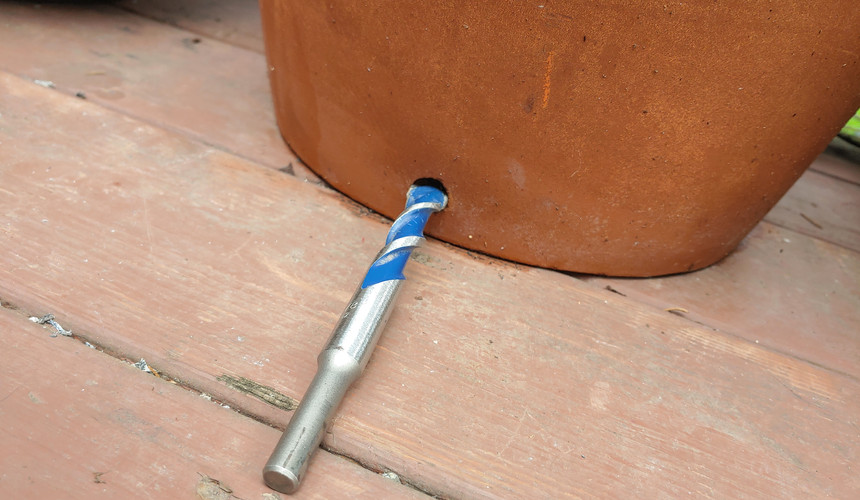Choosing the best pot
- Conrad Smith
- Jul 26, 2020
- 4 min read
Updated: Aug 21, 2020
The pot or growing container you use is almost as important as the soil it contains. The kind of container you use should be chosen with the plant’s preferences (dryer soil, wetter soil, deep tap roots, shallow lateral roots) and the local climate (If kept outside) in mind. It should have the appropriate drainage, width and height for the plant it will contain.
Terracotta vs. Plastic
Although some planters are wooden or plaster, the majority of the soil containers you will come across or use will be either plastic or terracotta.
Plastic
Plastic pots are cheap, difficult to break and light weight. This makes them attractive for lower budgets, large growing operations (with many plants and pots) and in situations where a large terracotta pot simply isn’t practical. Plastic does not wick moisture, or allow air to permeate its surface however. If plastic growing containers are used, extra care must be taken to ensure that the soil is well draining, and that there are sufficient holes in the pot to allow for the release of moisture (plastic pots tendency for wetness can be a benefit if you are growing a hydrophyte (or moisture loving plant).

Plastic pots containing seed grown Palora and Hailey's Comet varieties of Dragon Fruit.
Terracotta
Clay is better for potting cacti, especially when it comes to preserving root health. Unlike plastic the terracotta is somewhat permeable to air and wicks water out of the soil. In this way it is able to “sweat” the moisture and slowly evaporate it from the interior of the pot. Roots after all need to breathe too (no really, they do). Soils in terracotta pots will dry much faster than those in plastic pots. For plants requiring pots of 16 inch diameter or less (beyond that it gets very heavy and very expensive, it is advisable to use terracotta, especially if they require fast drying soils. This does not however mean that over watering is impossible in a terracotta pot.
Various columnar and barrel cacti kept in terracotta play pots ranging from 4 inch (10 cm) diameter to 16 inch (40 cm) diameter.
Modifying Pots For Outdoors
To ensure that plants have adequate drainage in terracotta or plastic containers it is advisable to drill 4 to 6 one half inch in diameter holes around the base of the pot. This allows water to flow out of the pot when the plant is kept outdoors and encounters the inevitable torrential downpour.
A masonry drill bit with 2/5th or 1/2 diameter works best for drilling through terracotta pots. Regular drill bits will not be able to penetrate the terracotta and may damage both the pot and the bit. The added holes make for excellent drainage and improved areation.
Different pots for different plants
Plant roots and their moisture requirements vary greatly, an appropriately chosen pot complements an appropriately mixed soil to ensure optimal plant health and survival.
Tree Dwelling & Tree Climbing "Jungle" Cacti
Epiphytic (tree dwelling) and hemi-epiphytic (tree-climbing) cacti do well in both plastic and terracotta pots. They are less sensitive to prolongeed periods of moisture, and indeed in some instances prefer it. Many species of christmas cactus, Selenicereus and Epiphyllum do well in a hanging pot; the stems or cladodes (Pad/leaf-like stems) often droop below the soil line.
Christmas Cacti (genus Schlumbergera) do best in plastic pots with numerous holes for maximum drainage, they do well in terracotta pots too, but will require more frequent waterings in hot weather (they like semi-moist soil).
Epiphyllum is easily at home in hanging plastic containers, although it is best to keep it in terracotta, if not in a hanging planter. As with christmas cacti, it is not strictly necessary.
Dragon Fruit (genus Hylocereus) does well in both types of containers. I prefer to use terracotta for smaller dragon fruit when possible, but once the plants get more established it is more practical and economical to use plastic. Many people will cut those ubiquitous 55 gallon industrial barrels in half and use the top and bottom for soil containers, or use the 5 gallon buckets found at any home improvement store. If a large plastic container is used with dragon fruit, it is important to have numerous holes at the base of the container for drainage as well as an especially well draining soil.
Column and Barrel "Desert" Cacti
Column and Barrel Cacti, or Xerophytic plants, pertaining to "dry" prefer much faster drying soils, than their Jungle or savannah dwelling "cousins". Terracotta clay pots are best, because of their porous suface wicks moisture and allows air to permate the pot better. Again, several holes drilled around the base, will provide the best assurance that the plant's roots won't sit in water. Plastic will retain far too much moisture in this case.
The species Cereus repandus and Trichocereus peruvianus may survive well in large plastic pots, however both are fairly moisture tolerant as far as columnar cacti go.
As a rule of thumb Xerophytic cacti (desert dwelling species) tend to have root systems which are shallower than they are deep. The roots may extend only a little ways beneath the soil, but will sprawl out laterally in every direction. In desert environments this serves to help the plants capture more water, faster in wetter seasons. Pots for columnar or barrel cacti should reflect this and be wider than they are deep. This allows roots to spread out, at least to a certain degree, as they would naturally and reduces the likely hood of unused "resevoirs" of damp soil in the base of the pot, which can harbor rot inducing fungi and other pests
Pots which are shorter than they are wide are best for columnar or barrel cacti.
MORE UPDATES TO THIS POST COMING




























Comments